Review: Thai Airways Airbus A380 Royal Silk business class seats
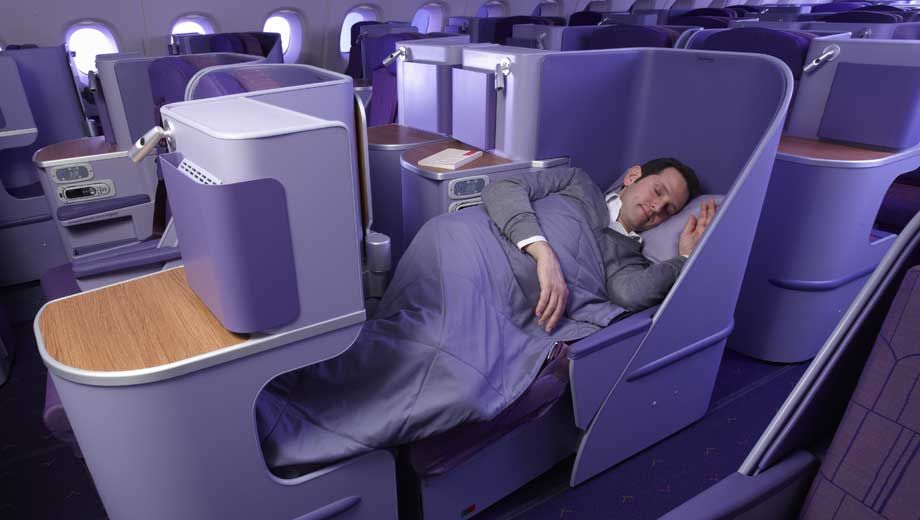
Australian Business Traveller was invited onto the debut flight of Thai Airways' first Airbus A380, and we've got the world’s first review of Thai's all-new Royal Silk business class seats – packed with photos and need-to-know notes for the business traveller.
Business class in Thai’s A380 is predictably located on the upper deck, and bookended by first class at the pointy end and a small economy section at the rear.
There are two business class cabins: the larger contains 48 seats over 12 rows (11 through 23 – like most airlines, the triskaidekaphobic Thai skips row 13), with 12 more seats in a secondary cabin further back (rows 25 through 27).
To make the most of its new flagship, Thai Airways chose the highly-regarded Solstys seat from EADS Sogerma and adopted a space-efficient staggered 1-2-1 layout which gives every passenger direct access to the aisle so there’s no climbing out or being climbed over.
We’ve set out the specs before: each of the business class benches is 20.9 inches wide with a seat pitch of 43-44 inches.
Eagle-eyed travellers will spot the 'three-point' seatbelt where the sash comes down from your shoulder as well as fastering 'low and tight' across your waist.
The cushions and padding are firm and supportive rather than that plush sink-into-it feeling.
The armrests are well positioned, although in the window seat I found my elbow was uncomfortably nestled against the rising part of the seat’s shell.
Window seats are angled are slightly towards the view, although there’s not the steep rake of Cathay Pacific’s business class.
Personal space
We love the trend towards boosting the personal space around business class seats, and Thai hasn’t settled for some token cocktail table.
This shelf's got more room than the fold-down tables in most economy seats.
It’s especially handy when you’ve finished your meal and want to quickly get back to work – just shift the dinner tray from your main table off to the side.
The window seats deliver an insane amount of usable space because you also have the benefit of those bins under the window.
I was juggling a lot of kit during my long flight – laptop, headphones, camera, tablet, associated cables and assorted paperwork – and never once fell short of space.
The coathook keeps your coat handy during a flight, but I found doing so cluttered up the space around my knees.
Another small but significant consideration in the Solstys seats is the sensible placement of the headphone and AC sockets.
Every traveller has been on a flight where you first of all have to hunt around just to find these ports, and then bend and squirm in your seat to insert the plug.
In these seats the headphone jack is adjacent to the handheld controller for the in-flight entertainment system.
The AC socket for your laptop is located further down the same panel so it’s both easy to see and easy to reach.
The tray table which folds down from the wall of the seat module is large enough to comfortably fit the largest laptop.
It doesn’t come down quite close enough to the passenger, however, so you’ll need to slide your seat forward a few inches for eating or typing.
A pivoting hinge on the arm swings the table back towards the video screen so you can more easily side in and out of the seat without folding the table up.
There’s not a huge amount of storage around the seat itself (we still reckon Cathay Pacific’s business class takes the gold medal in this category).
The nook under the armrest is best suited for small personal items – a pair of reading glasses, a smartphone or iPod, a book or your Kindle, or stowing your noise-cancelling headphones when not in use.
Large tablets like the iPad aren’t a neat fit, although smaller 7 inch models like the Google Nexus should slide right in.
The AC socket is handy if you want to plug i your smartphone for an en-route recharge and leave it sitting in that hidey-hole.
But if you use one of the USB ports for that purpose you’ll need to leave the cable dangling and the device sitting on the footrest shelf.
Each seat in Thai’s A380 business class gets a large 15.4 inch touchscreen monitor fixed to the rear of the seat shell in front.
But you won’t need the long reach of a Harlem Globetrotter as there’s a conventional controller tucked into the armrest.
Each business class seat also gets two USB ports for charging smartphones and tablets during the flight.
Sadly, the capabilities for using a USB key plugged in either of these ports is severely limited.
There’s no support for video files, so you can forget about BYO movies or TV shows (including that latest episode you downloaded from the lounge just before your flight). All you get is music (in MP3 format), photos and PDF files.
Even then, the system works only with USB keys formatted using the Windows-based FAT32 system, and FAT32 in turn recognises only 2GB partitions. Insert a 4GB or 8GB key into the slot and the system simply won’t ‘see’ it, nor play any of the content stored on that drive.
The snooze test
Each seat has a deep and decidedly snooze-inducing recline, and goes all the way down to a fully 180 degree lie-flat bed.
If you’re looking at that photo and thinking it doesn’t seem completely flat, but is on a slightest of slopes, you’re right – the seat is 3 degrees off the horizontal.
Aircraft are slightly angled during flight, even what we think of as ‘level flight’.
Sogerma’s seat-design boffins take this into account and assume that angle of incidence to be - you guessed it - 3 degrees.
On the ground you’d be lying in a bed that’s ever so slightly sloping. But in flight, the seat’s 3 degree offset compensates for the plane's own tilt so that you’re lying fully flat.
But will you be fully comfortable, especially if you’re fully stretched out?
That will depend on how tall you are.
I’m close to 180cm (5’11”), and lying flat on my back I could feel the top of the seat around my head, but inching down had my feet touching the base of the shell.
Some travellers may also find recess which their feet tuck into could also be a tight fit.
Sleeping on my side and with a bit of a bend wasn’t an issue but I wouldn’t want to be a traveller who tops the 6 foot mark.
In both the window and middle seats, lying on my back with arms crossed over my chest, I found one elbow always wedged into the crevice between the armrest and storage nook, while the other sat against the armrest.
The seatbelt fixtures can also get in the way.
Moving to an aisle seat was less constraining, as one elbow was free to jut out slightly into the aisle, although not so much that it would be bumped by passers-by.
Which Thai A380 business class seat is for you?
Not all seats in Thai’s A380 business class are created equally.
The staggered layout has the physical location of each seat alternating from one row to the next.
In row 14, for example, the seat is next to the window, with a shelf between you and the aisle.
In row 15, however, your seat is directly at the aisle – and the side shelf is now located between you and the window.
Under that shelf and inside the shell of the S-shaped seat lies the footwell of the seat behind you.
This neat dovetail layout means that the lower part of the seat-bed for the aisle passenger in row 15 is located under the shelf of the window passenger in row 14.
(Don’t wrinkle your nose in fear of unsavoury foot fragrances wafting your way: the seats are fully enclosed.)
Decoding Thai’s A380 Royal Silk business class seat numbers
That unique layout means that seat numbering differs from the norm – and understanding how the seats are numbered is vital to getting the type of seat you want.
Thai tags the window seats as A and K, with the aisle seats as B and J.
Because the location of the seat alternatives from row to row, the seat numbers mimic this pattern.
The first set of true ‘window’ seats are 12A and 12K. This is followed by aisle seats 14B and 14J (as noted earlier, Thai skips row 13).
That pattern continues through the cabin: 15AK, 16BJ, 17AK, 18BJ and so forth, through to the final row of 24BJ.
The pairs of seats in the centre of the A380 have a similar variation, except that instead of window-aisle they’re middle-aisle.
One row has the seats right next to each another.
Each seat still has a side shelf, but they're located next to the aisle.
On Thai’s seating chart these two-together pairs are allocated seat numbers E and F, and called ‘middles’. French seat manufacturer Sogerma more romantically refers to these as ‘honeymoon seats’.
By that same measure, every other row in the centre of Thai's A380 business class cabin might be dubbed ‘divorce seats'.
Each seat in this row is situated on the aisle, with their shelving in the middle, so the seats are noticeably separate.
These carry seat numbers D and G, and are also kown as ‘aisles’.
The first row of centre seats in Thai's A380 business class cabin is 11D and 11G – they're aisle seats where you don’t need to interact with your seatmate.
The second row are the ‘honeymoon seats’ of 12E and 12F, where it’s harder to ignore your seatmate.
This continues through the cabin as 14DG, 15EF, 16DG and so on, down to the final row of 23EF.
The last three rows of business class in the A380’s smaller rearward cabin are arrayed 25 A-D-G-K (window, aisle, aisle, window); 26 B-E-F-J (aisle, middle, middle and aisle); and 27 A-D-G-K (window, aisle, aisle, window).
As we said earlier, knowing how Thai’s A380 seat numbering scheme works means you have the best chance of choosing a seat that suits your style and needs and even your comfort.
That’s because the staggered layout creates three different business class seat ‘environments’ on Thai’s Airbus A380: window (tagged A and K), aisle (B and J, D and G) and middle (E and F).
Window seats: A, K
Snaring a window seat on Thai's A380 isn’t just about the view.
You have a much greater sense of privacy because you’re physically separated from the aisle.
Being a little further away from the aisle’s associated foot-traffic can also make for less disturbance if you’re a light sleeper.
Window seats are also storage central. The bins built into the sides of the A380 are right next to you (and you get two of those), so it’s easy to stow and retrieve items during the flight, and use the top of the bins as extra shelf space.
You can also wedge your laptop or other small carry-on bag between the sidewall and the shell of the seat in front of you, for handy access during the flight.
The upshot of all this is that you can keep clutter around your feat and seat to a minimum, yet still have everything you need within easy reach.
This creates the ideal environment for turning a long flight into a productive work session.
However, there’s a whopping great caveat to Thai’s A380 window seats.
Mind the gap...
The gap between your side shelf and the rear of the seat shell in front of you is barely 30cm (12 inches).
That’s a tight squeeze for anybody who’s not on the slim’n’trim side.
There's even less room when you allow for the sizeable hinge for the tray table (which is housed on the seat shell), or have your jacket dangling from the hanger, plus the need to step gingerly if your laptop’s power brick is plugged into the AC socket.
It’s especially problematic if you decide to leave your seat while you’re using the tray table.
The natural thing to do is to push this pivoting table away from you – but that leaves the table fastening clip (mounted on the seat shell) exposed, jutting out a over an inch from the wall and likely to snag your clothing as you attempt to squeeze by.
So as much as we love the window seat, especially for solid in-flight work sessions, we suggest this as your seat of choice only if you’re of a slim build and don’t plan to get up much during the flight.
Aisle seats: B and J
As you’d expect, the B and J business class seats on Thai’s A380 are much easier to get in and out of compared to their window-hugging AK cousins.
However, the proximity to the aisle could leave you feeling more ‘exposed’ and more aware of traffic.
You’ll also need to crane your neck around to check the view out the window.
While you still get to claim two of the under-window bins, they won’t be within reach – so they’re best used for storage all the way through the flight, rather than fishing around for items mid-flight.
Aisle seats: D and G
These seats are next to the aisle but in the A380’s middle block. The main difference between them and their closer-to-the-window counterparts is that you won’t have access to the under-window bins.
If you travel lightly and can keep most of your in-flight items tucked away in the overhead bin, this won’t be an issue.
Middle seats: E and F
Thai’s ‘honeymoon seats’ are clearly the first choice if you’re travelling with a partner or a close colleague because you’ll be sharing almost every moment of the journey.
On the other hand, solo flyers – and that’s the majority of business travellers – will want to avoid E/F allocations to reduce the risk of being stuck next to a garrulous passenger.
Also in our exclusive coverage of Thai Airways' Airbus A380
- Photo tour: from tip to tail and first class to economy on Thai's new big bird
- Thai's A380 routes include London, Paris and Sydney
- On the Thai A380 – a baby-free zone in economy
That's our take on Thai's new A380 business class: how do you reckon it stacks up? Share your thoughts in the comments box below!
Follow Australia's number one site for business travellers and frequent flyers on Twitter: we're @AusBT.
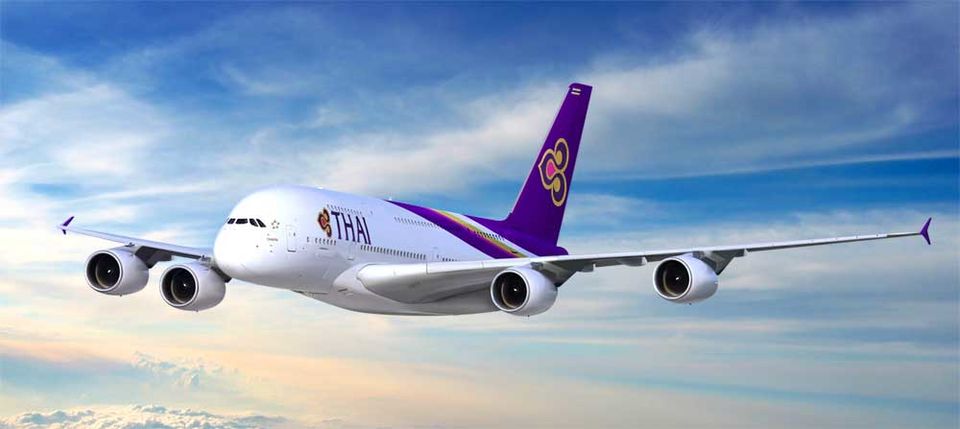
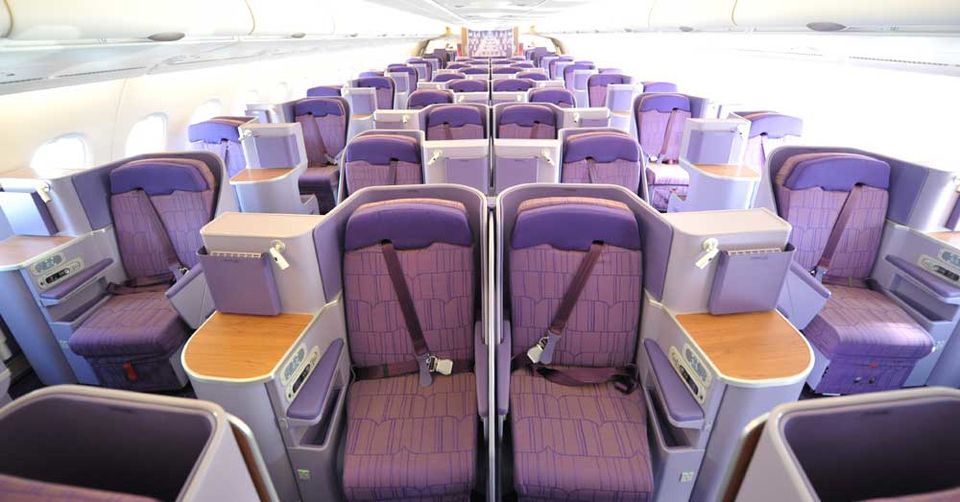
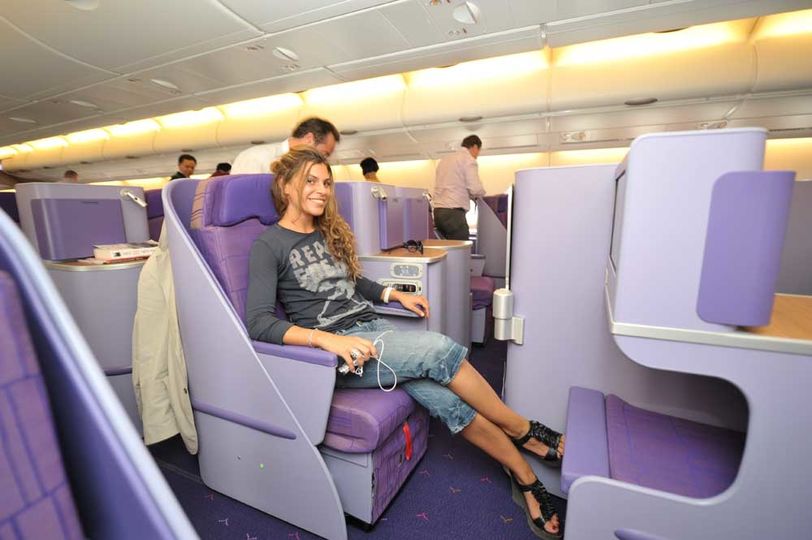
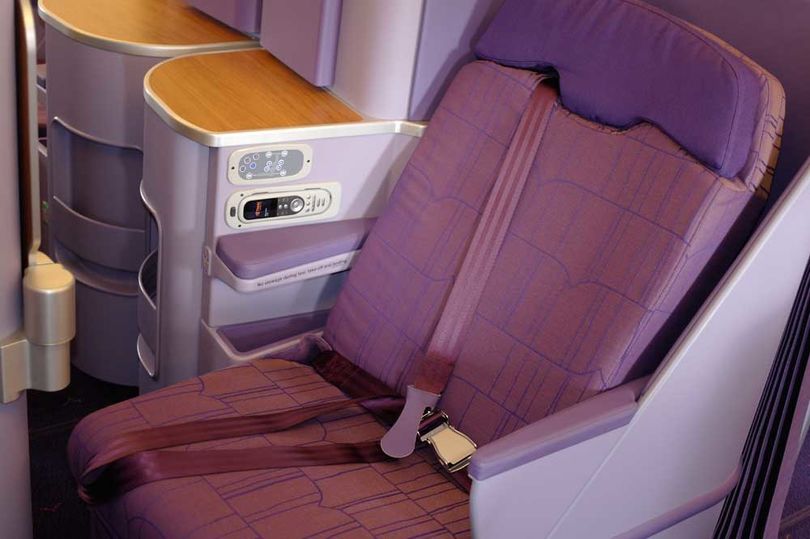
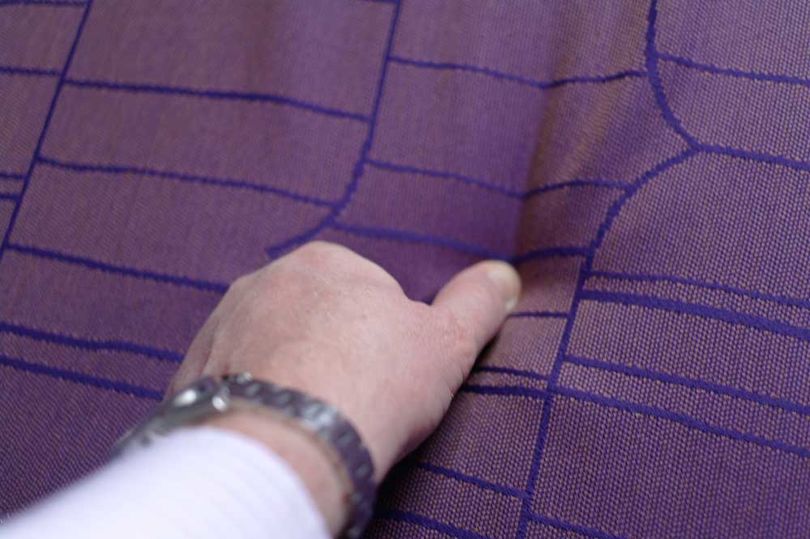
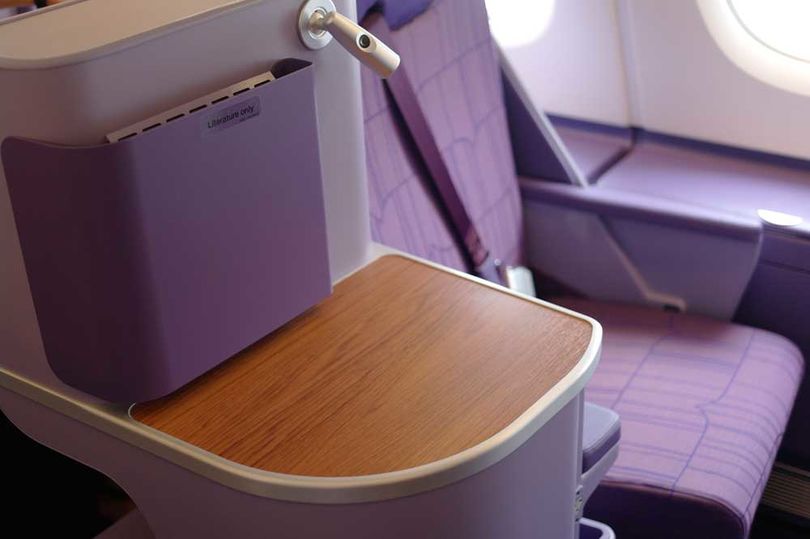
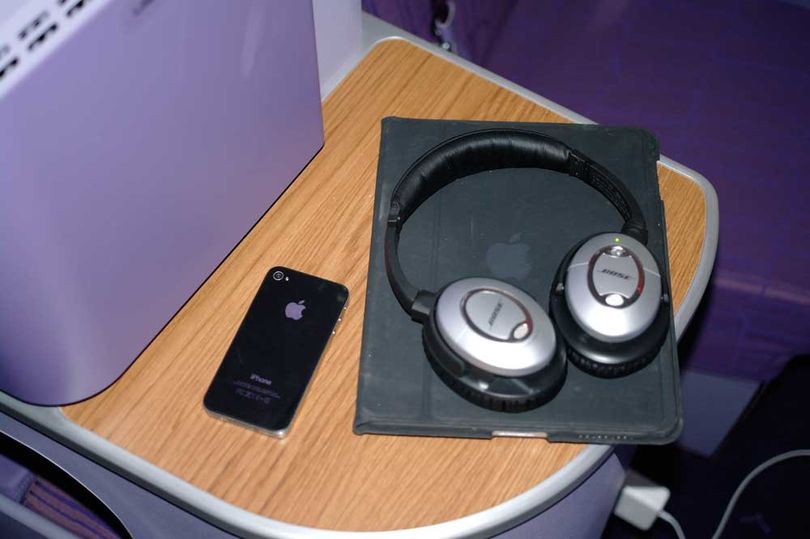
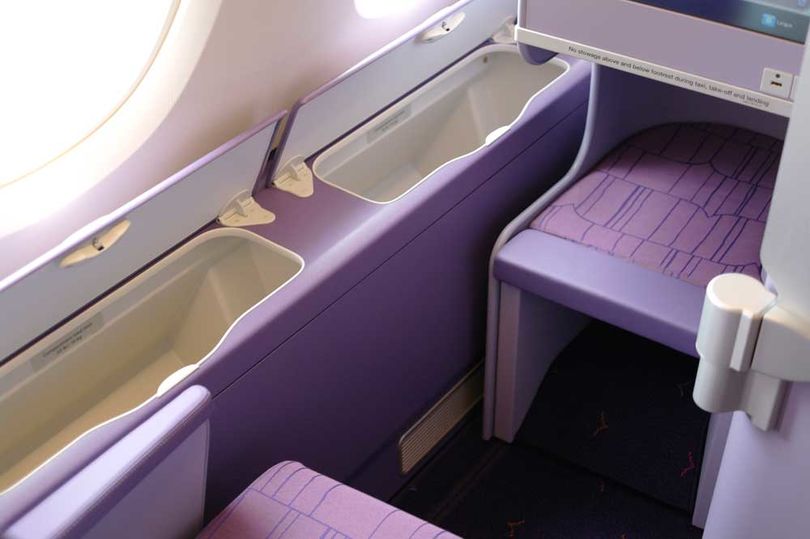
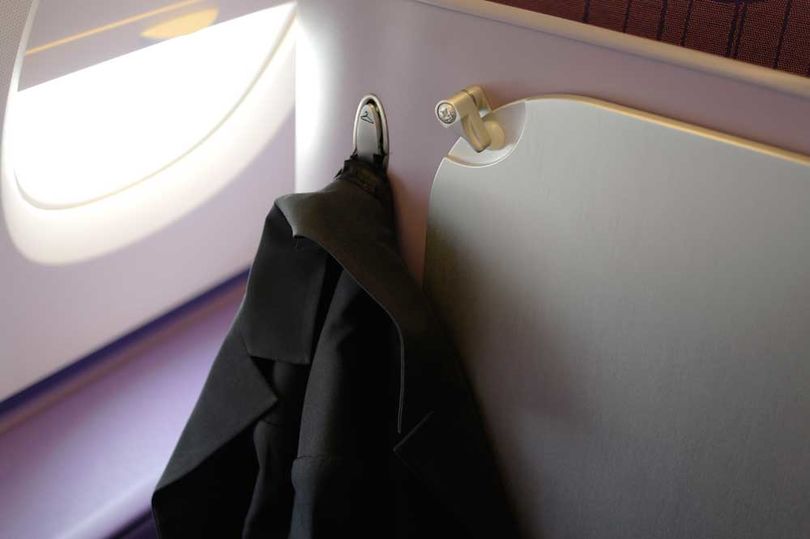
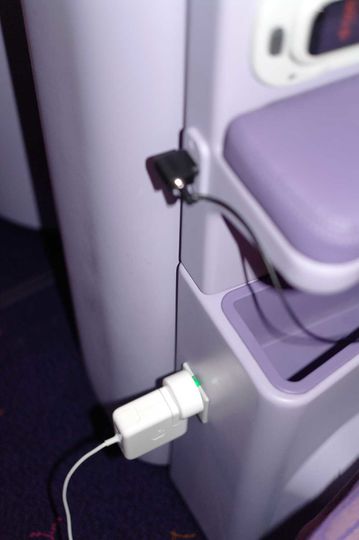
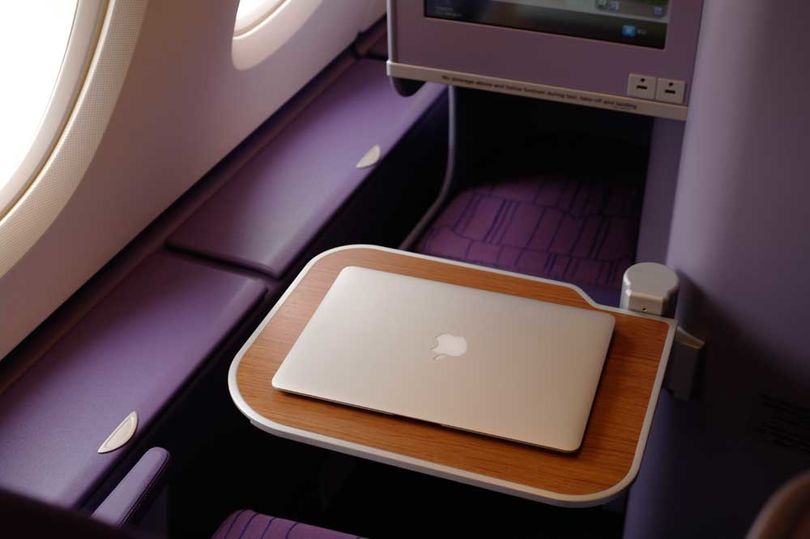
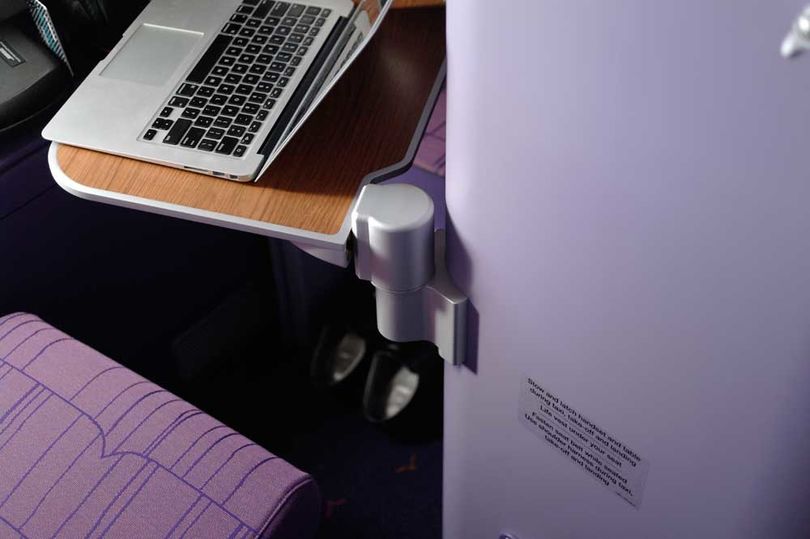
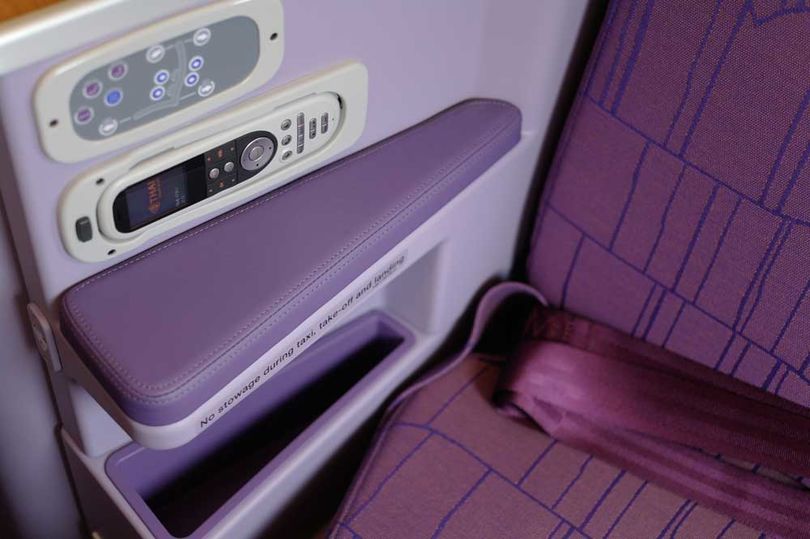
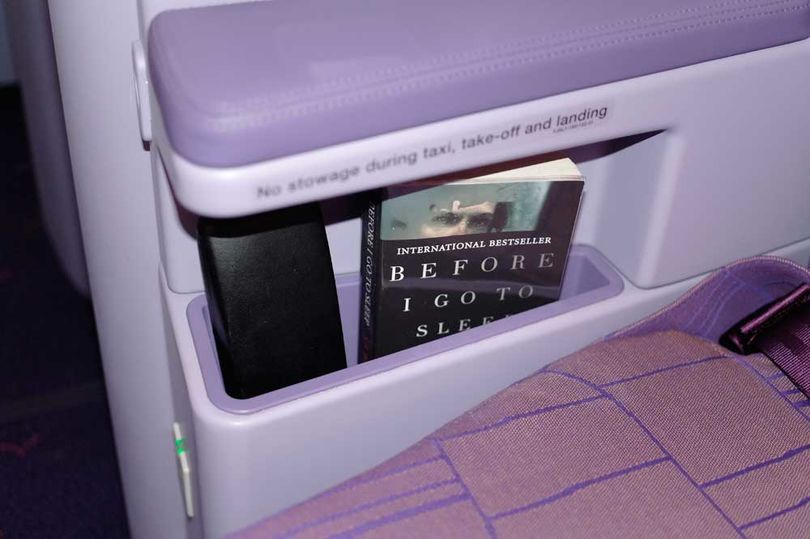
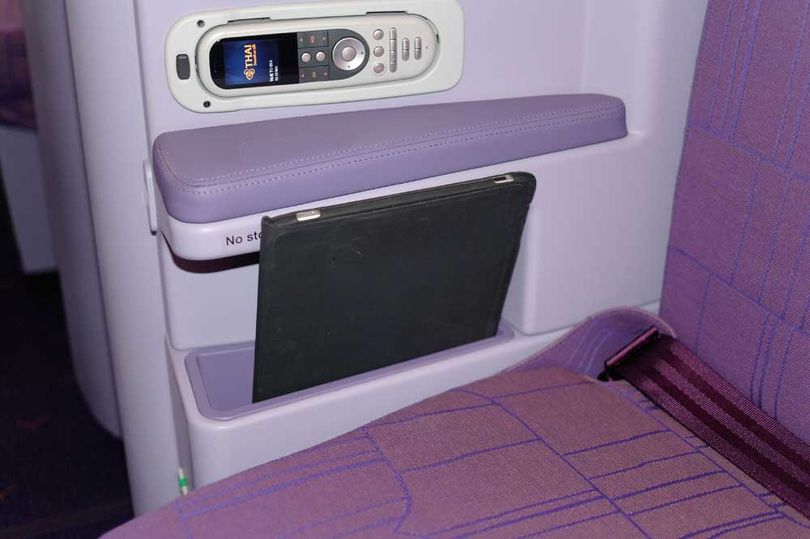
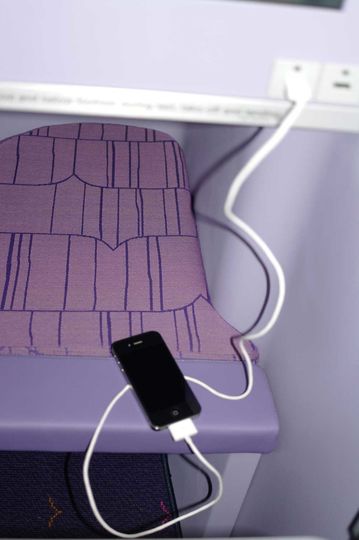
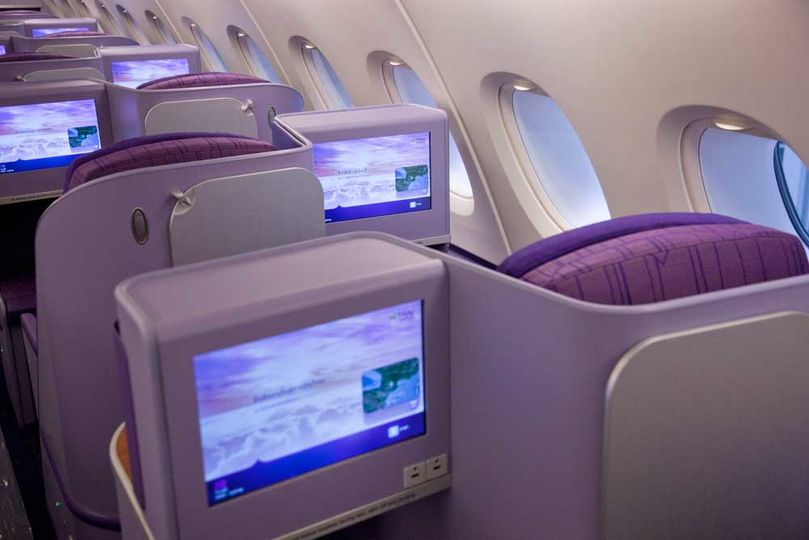
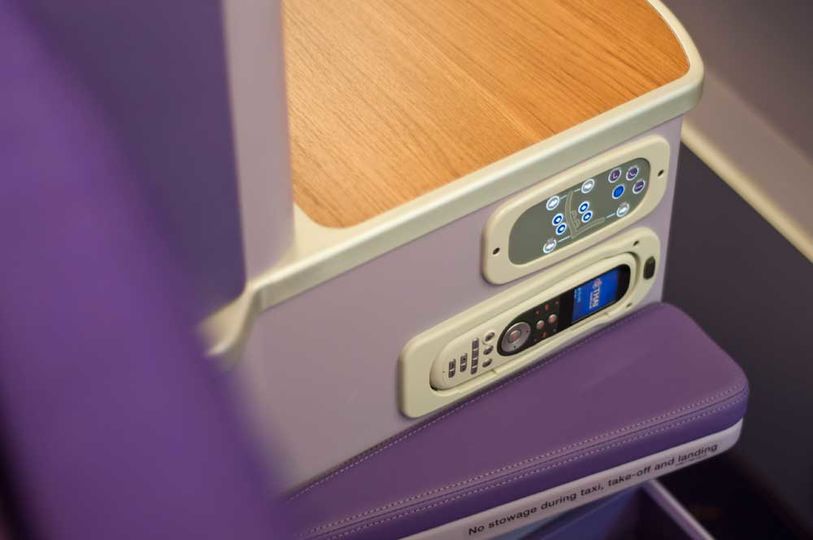
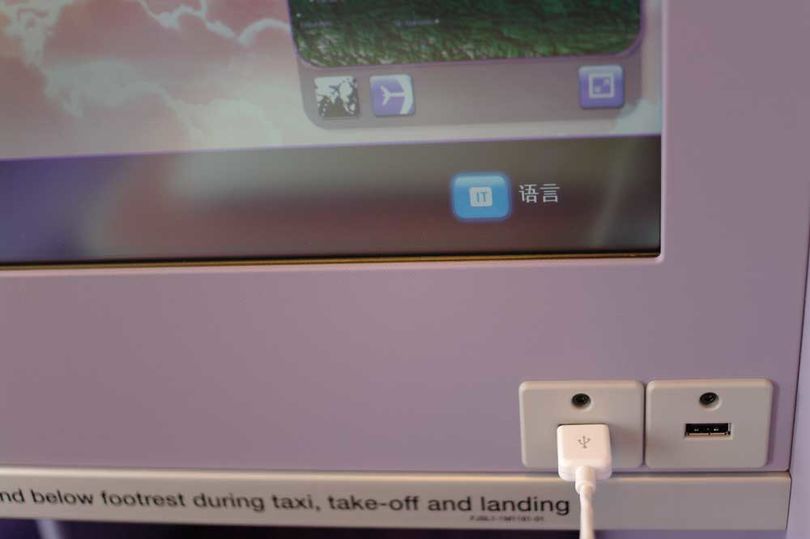
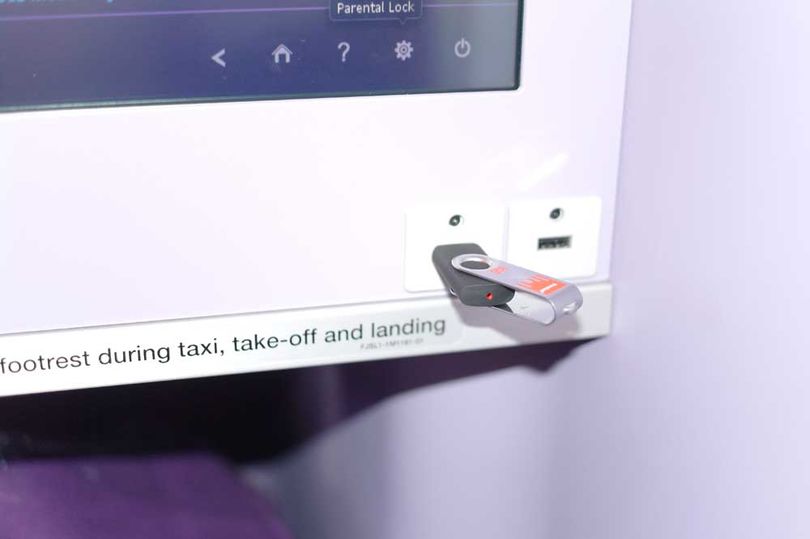
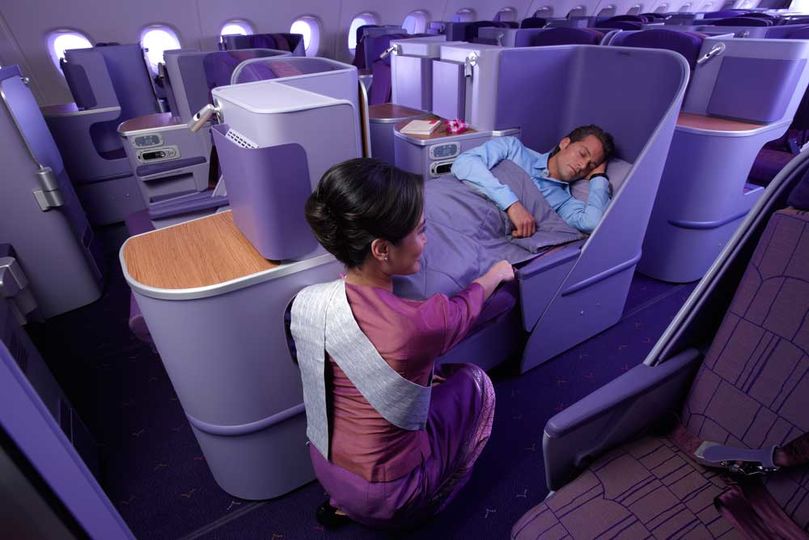
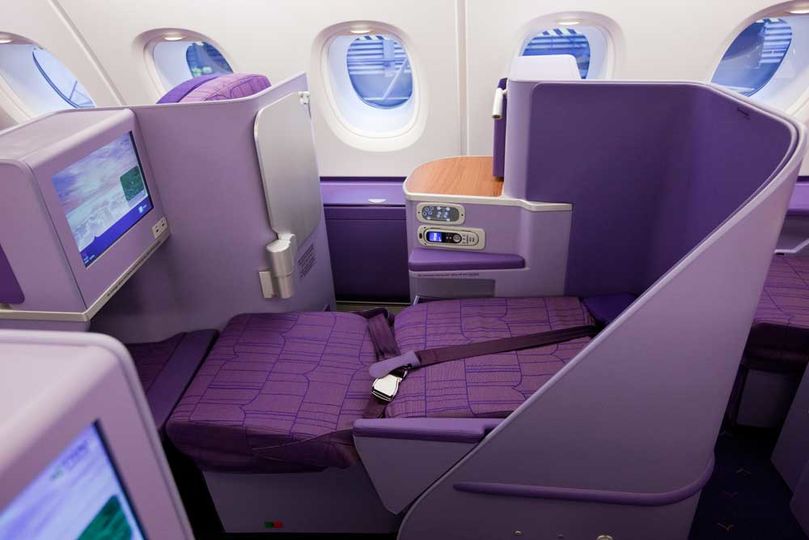
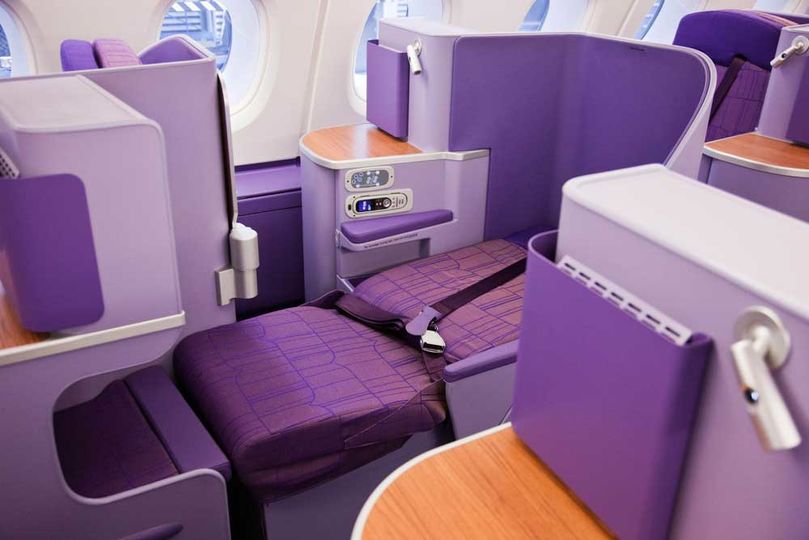
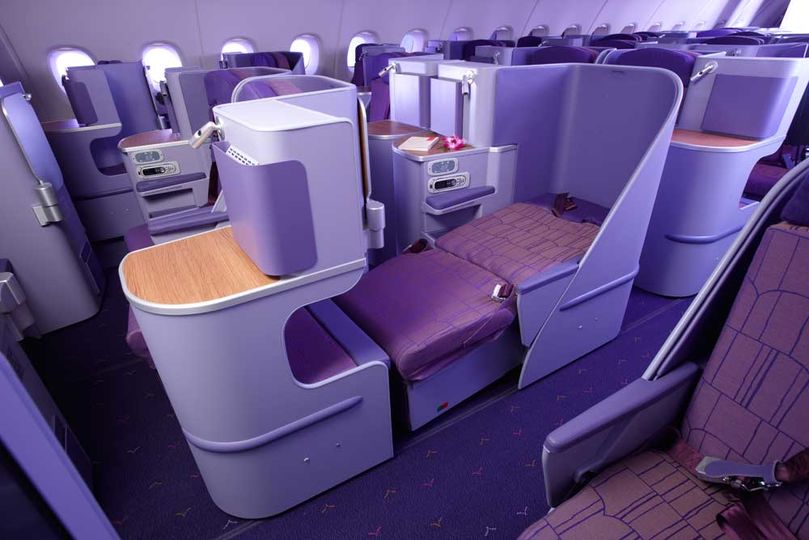
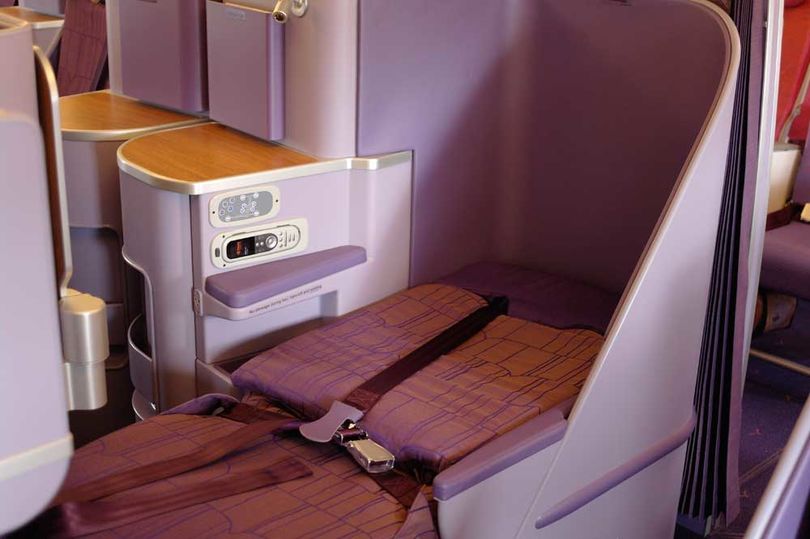
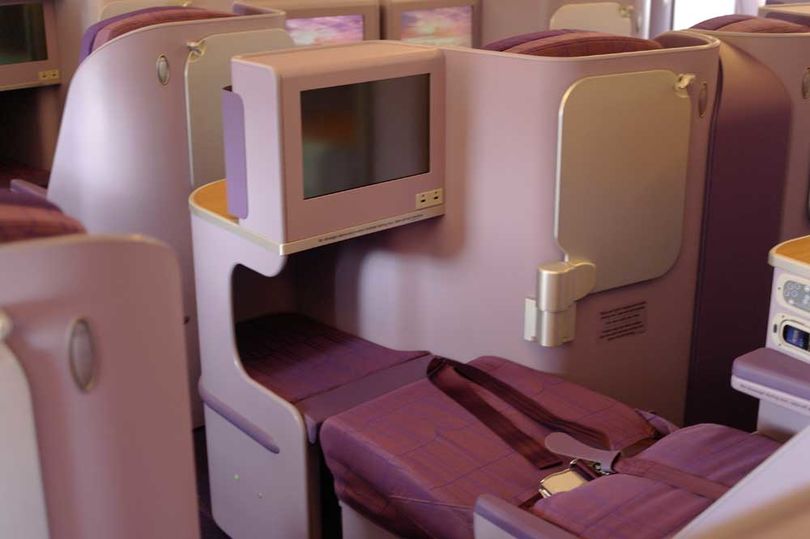
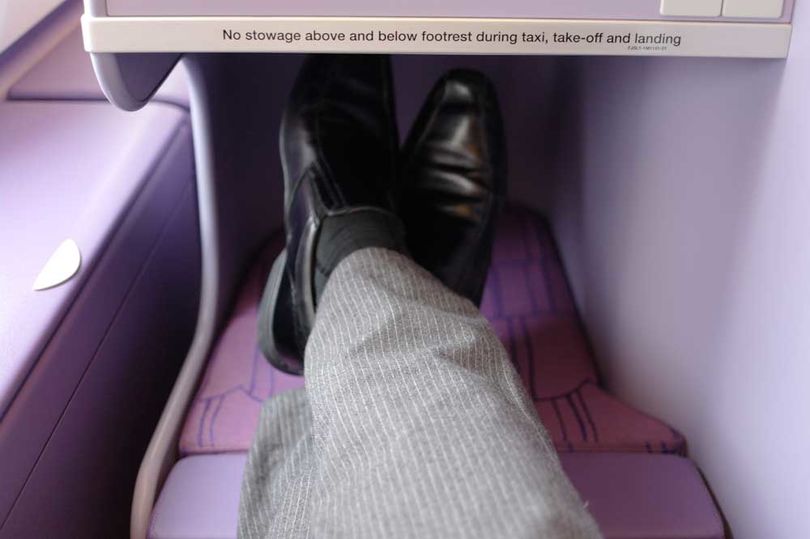
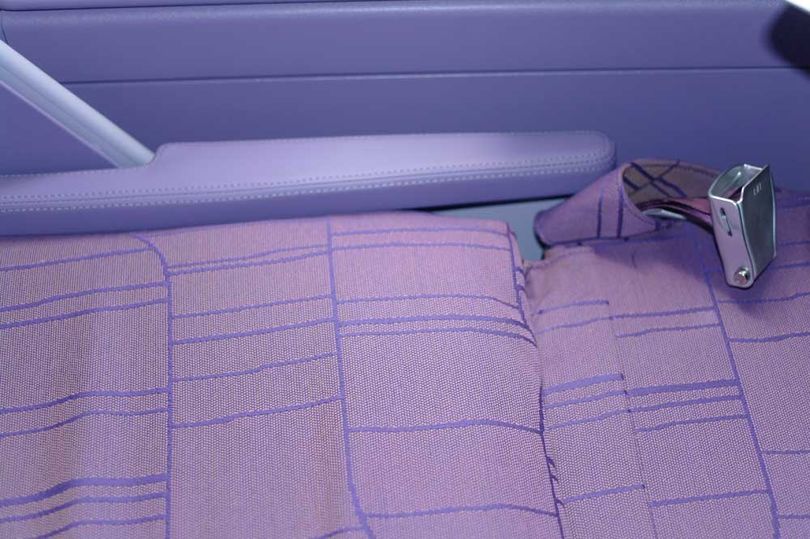
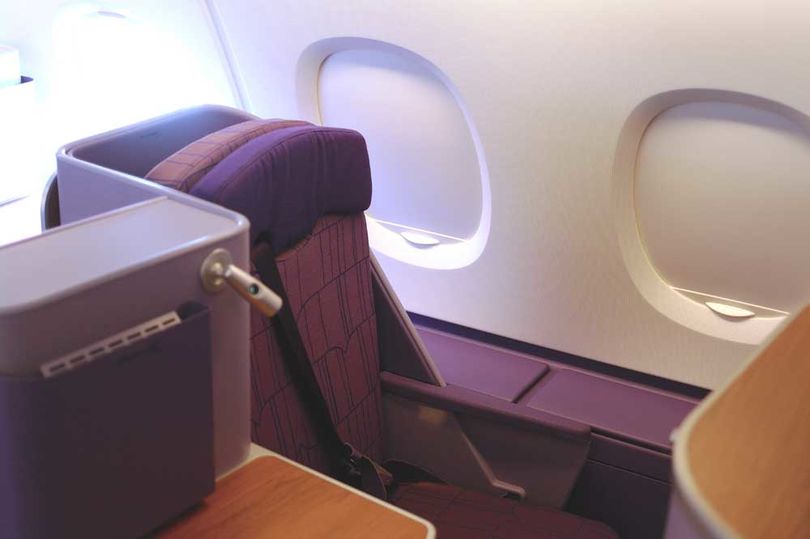
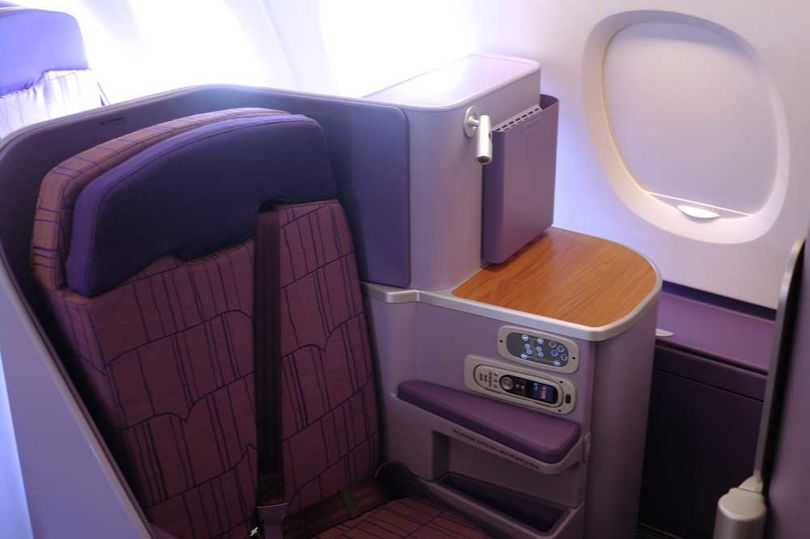
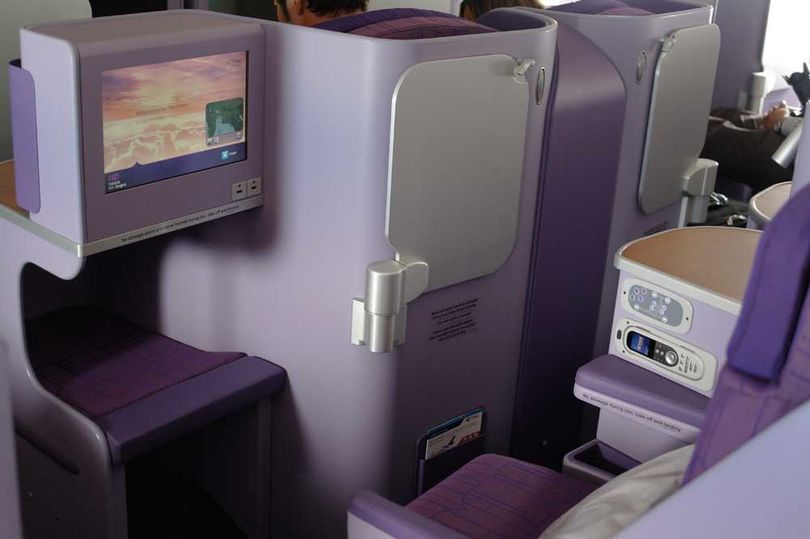
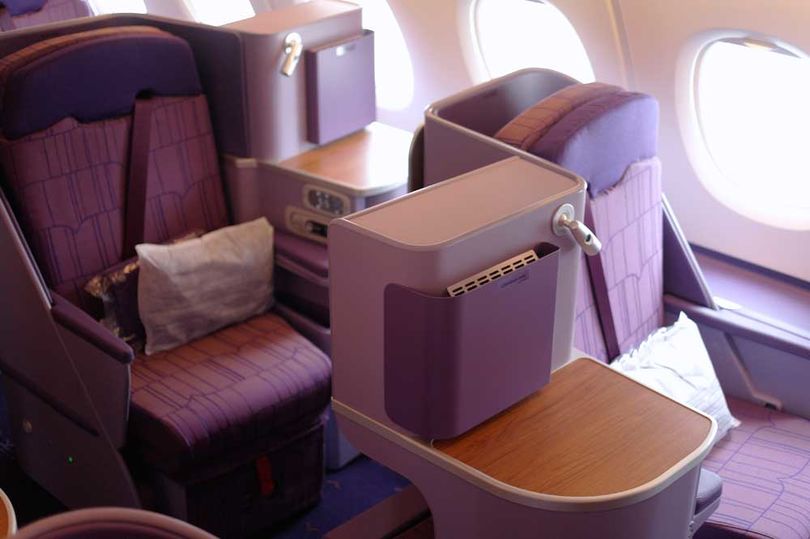
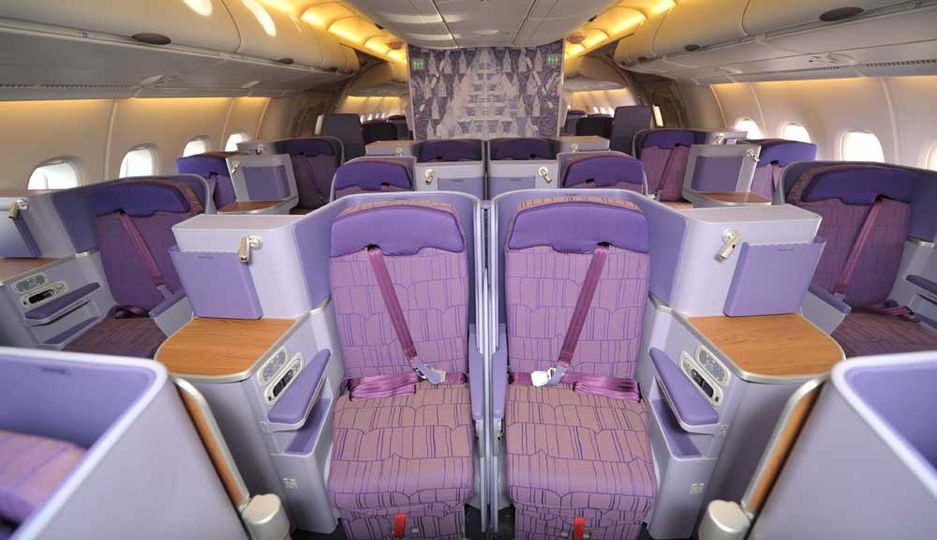
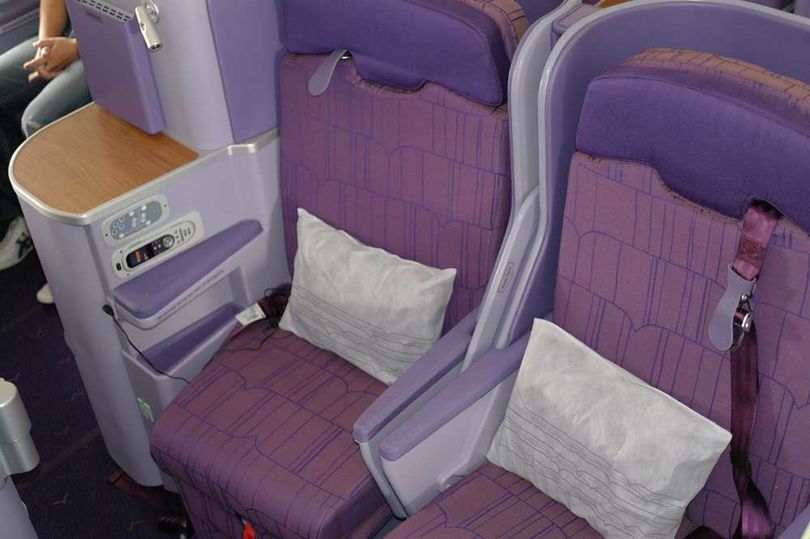
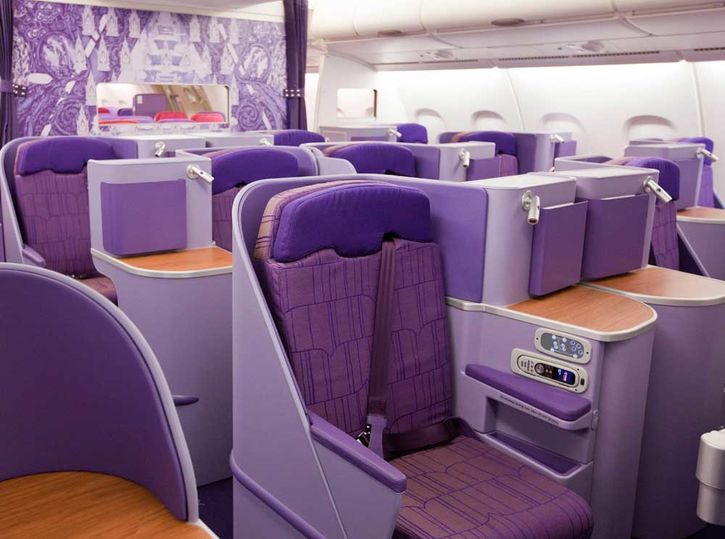
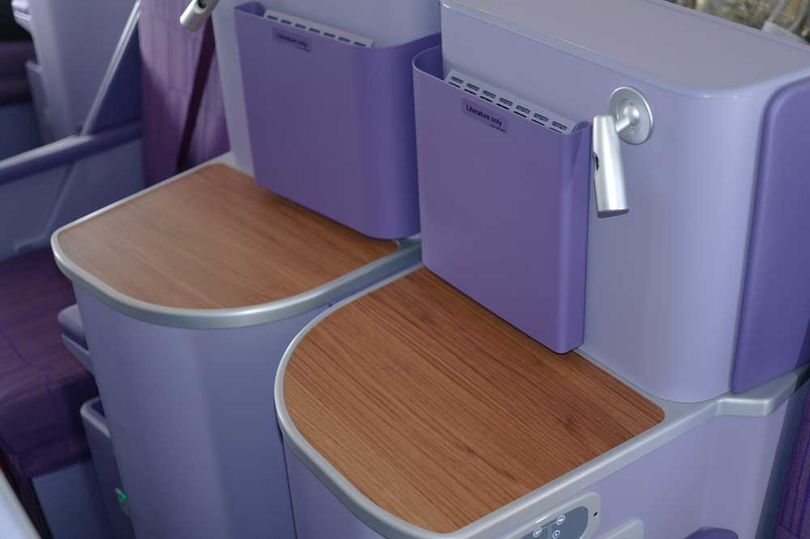
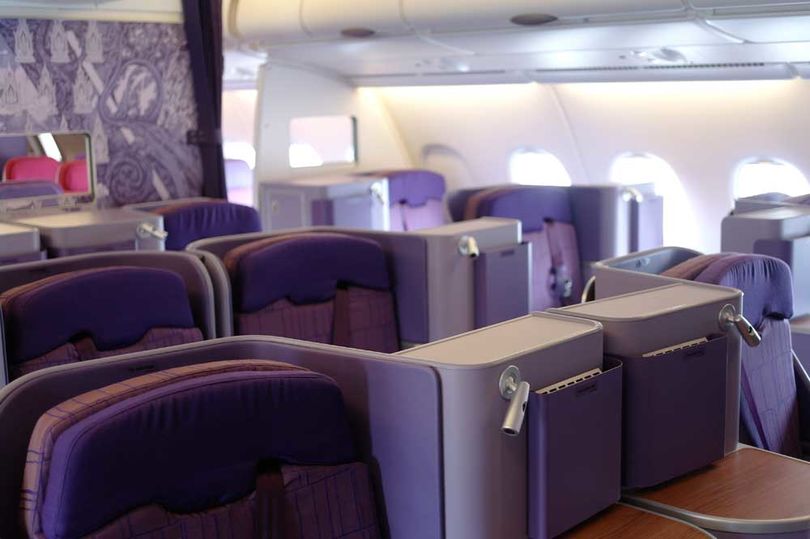
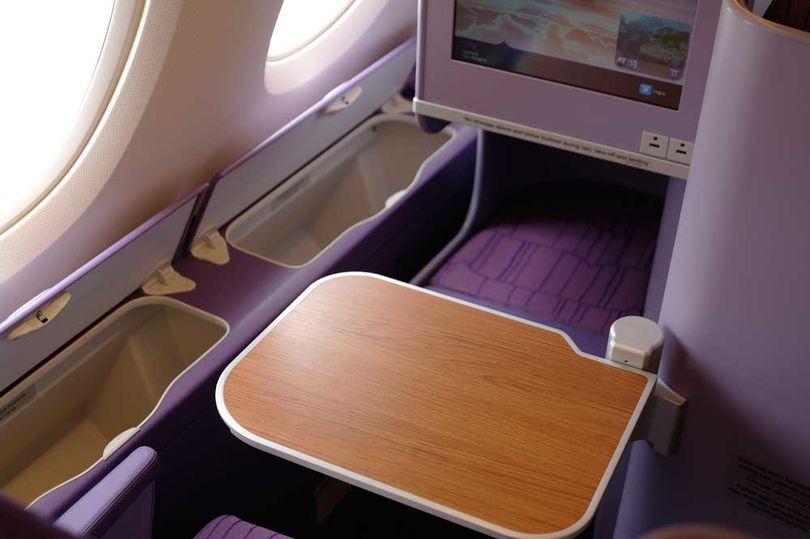
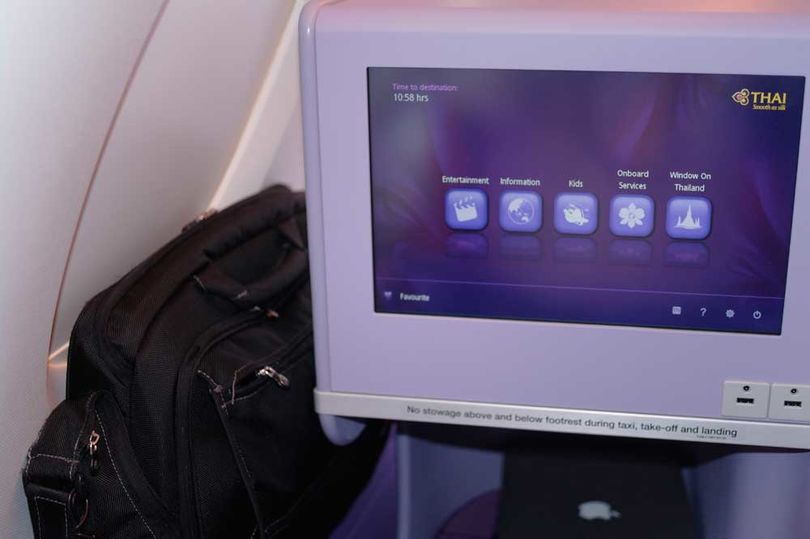
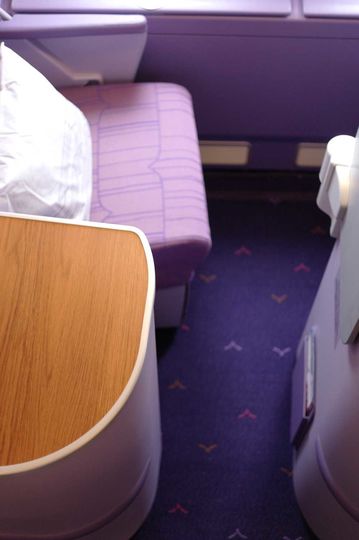

24 Oct 2011
Total posts 161
Great review AUS BT.
And staggered layout FTW!
AA
21 Oct 2012
Total posts 4
Wow, what an awesome review. Keep up the great work, this was perfect.
AA
21 Oct 2012
Total posts 4
Why is this posted under news though? I just tried to find it under the reviews section, took me a couple minutes to realize the reason I couldn't find it is b/c this is posted under news not reviews
Cathay Pacific - Asia Miles
25 Apr 2013
Total posts 542
There's a problem with reviews that David is fixing right now
Hi Guest, join in the discussion on Review: Thai Airways Airbus A380 Royal Silk business class seats